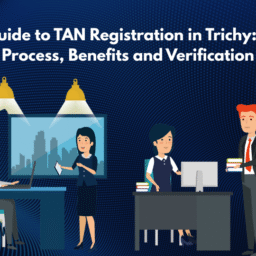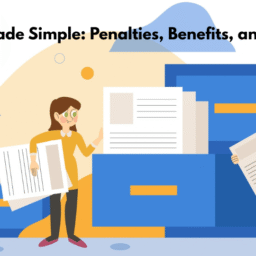
History and Evolution of GST in India
📌 Initial Concept and Proposal
The idea of introducing a unified Goods and Services Tax (GST) in India was first proposed during the tenure of Prime Minister Atal Bihari Vajpayee. To shape the framework, the Empowered Committee of State Finance Ministers (EC) was formed to design the roadmap for implementing GST, which aimed to streamline India’s complex tax structure.
🏛 Legislative Journey to GST
The path to GST saw many legislative milestones:
In March 2011, the Constitution (115th Amendment) Bill was introduced but later lapsed in 2013.
In December 2014, the Constitution (122nd Amendment) Bill was introduced, passed in August 2016, and became the Constitution (101st Amendment) Act, 2016—the legal foundation for GST.
🗓 GST Rollout in India
India officially adopted the Goods and Services Tax on July 1, 2017. The historic launch was inaugurated by Prime Minister Narendra Modi and then-President Pranab Mukherjee, marking a transformational moment in India’s tax history.
⚖️ The Tax Landscape Before GST
Before GST, India had a dual taxation system where both the Central and State governments levied a long list of indirect taxes, including:
🔹 Central Taxes
Central Excise Duty
Duties of Excise (Medicinal and Toiletries)
Service Tax
Additional Duties of Customs
Cess and Surcharges
🔸 State Taxes
Value Added Tax (VAT)
Entertainment Tax
Luxury Tax
Entry Tax
Purchase Tax
State Excise
Tax on Lotteries, Betting, and Gambling
This fragmented system led to the cascading effect of taxes—also called “tax on tax”—which increased the cost of goods and services.
✅ What is GST?
Goods and Services Tax (GST) is a comprehensive, destination-based indirect tax that replaced most of the previous indirect taxes. It is applicable on the supply of goods and services across India.
The Goods and Services Tax Act was passed on 29 March 2017 and implemented on 1 July 2017. Today, GST is the single umbrella tax law that governs all indirect taxation in India.
Calculate the current GST rates and your payable amount easily using our free GST Calculator.
🔄 Components of GST
To support India’s federal structure, GST has three main components:
CGST (Central GST): Collected by the Central Government for intra-state transactions.
SGST (State GST): Collected by the State Government for intra-state transactions.
IGST (Integrated GST): Collected by the Central Government for inter-state and export/import transactions.
🔁 Multistage Taxation Explained
GST is levied at every stage of the supply chain—from raw material purchase to the final sale to consumers. Since it taxes only the value addition at each stage, the input tax credit mechanism ensures there’s no cascading effect.
The stages include:
Purchase of raw materials
Manufacturing or production
Warehousing
Wholesale
Retail
Final consumption
📈 Expanding the Taxpayer Base
One of the key goals of GST was to bring more businesses under the tax net. With easier and unified registration, sectors that were earlier part of the unorganized economy—such as real estate and construction—are now formalizing rapidly.
As a result, GST has:
Widened the taxpayer base
Improved compliance
Enhanced revenue collection
🌐 Simplified Compliance Through Online Portals
Before GST, business owners had to deal with different tax departments and systems. GST changed that with an integrated online platform for:
Business registration
Return filing
Tax payments
Refunds
e-Way bill generation
e-Invoicing
The digitization of tax processes has reduced paperwork, minimized human error, and improved transparency.
🛢 Goods Outside the GST Framework
While GST covers most goods and services, a few remain outside its scope and are still taxed separately by the respective governments. These include:
Petroleum crude
High-speed diesel (HSD)
Motor spirit (petrol)
Natural gas
Aviation turbine fuel (ATF)
Alcoholic liquor for human consumption
These items may attract a 2% concessional rate under Form C in interstate purchases.
💸 How GST Has Lowered Prices
GST reduces the cost of goods by eliminating the tax-on-tax burden. For example, previously excise duty was levied on the manufacturing cost, and then VAT was applied on the excise-added price. With GST, only the net value addition is taxed.
The benefits include:
Lower production costs
Uniform pricing across states
Improved supply chain efficiency
Boosted consumer confidence
🧾 New GST Systems and Compliances
📄 E-Way Bills
Introduced in April 2018, the e-way bill system tracks the movement of goods above ₹50,000 across and within states. This has helped reduce tax evasion and speed up logistics.
🧾 E-Invoicing
Mandatory from:
October 1, 2020 for companies with revenue over ₹500 crores
January 1, 2021 for companies with revenue over ₹100 crores
E-invoicing ensures real-time invoice reporting to the GST portal, minimizing fraud and manual errors.
🧮 GST Returns – Reporting Your Tax Details
Every GST-registered business must file GST returns, which summarize:
Total sales and purchases
Output and input GST
Tax liabilities and credits
Returns vary based on the business size and turnover and include GSTR-1, GSTR-3B, and others.
🎯 Benefits of GST
✅ Eliminates multiple taxes
✅ Avoids cascading tax effects
✅ Enhances tax compliance via technology
✅ Simplifies interstate trade
✅ Creates a common national market
✅ Encourages formalization of small and medium businesses
Conclusion
The introduction of Goods and Services Tax (GST) marks a monumental reform in India’s indirect taxation history. By consolidating various state and central taxes into one, GST has not only improved tax efficiency but also enhanced ease of doing business. With continuous updates and a growing digital backbone, GST is paving the way for a more transparent, integrated, and compliant Indian economy.



